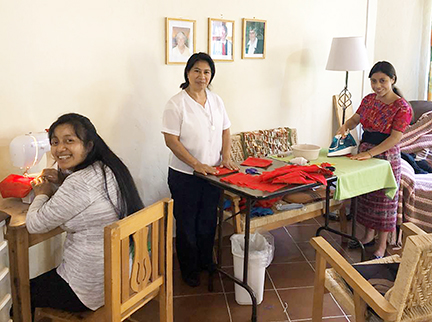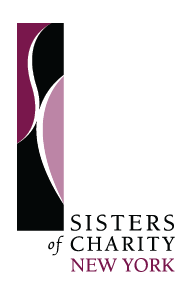The following is taken from the Summer 2020 issue of Vision.
It seems impossible to identify the exact time when the coronavirus entered the United States, and it was even less possible to determine its manifestation in Guatemala, Central America. In conversation with the Sisters of Charity in the rural areas of Sololá and Quiché, we gleaned some information about the virus’ impact on people’s lives. In mid-May, when the death toll reached a daily one hundred fifty, the country was mostly shut down.
The Guatemalan government, headed by President Alejandro Grammatei, a medical doctor, has been implementing the universal precautions associated with the virus. As is the situation throughout the world, the safety of vulnerable people depends on curbing the spread of the virus. Gatherings and celebrations of any kind are prohibited in Guatemala. Even while extensive precautions are taken to control the virus, there is enormous stress on the country’s limited medical resources.

Sr. Rosenda, center, with volunteers Tomasa, right, and Ana Maria, make masks for the community of Ixcan.
Public transportation is prohibited in rural areas and the city. People are expected to stay at home, even when home is a tiny overcrowded dwelling with limited access to food and water. Checkpoints are strategically located to prohibit travel in private vehicles. Citizens are permitted to leave the house to get food or other necessities, but people 60 years or older must stay indoors.
Most of the people in rural Guatemala work on the land. At this time of year, they need to go to markets to buy seeds. During these months of our springtime, they are hard at work to prepare the land for planting. Any circumstance that limits this preparatory work may result in severe food shortages in the coming year.
How did the virus enter Guatemala, apparently at the same time it emerged in the United States? One possibility could be the deportation of undocumented Guatemalans to their country of origin. In addition, there continues to be a large number of Central Americans awaiting processing at the Mexican–United States border. People who may have been poorly housed and fed for many months are natural hosts for the virus. Some become discouraged and return to their hometowns in poor physical condition with no work, no wages and no food.
What gives us hope? Sr. Rosenda in the House of Formation works with neighbors Tomasa and Ana to sew masks for the remote community of Ixcan. Sisters Nora Cunningham and Rosenda share dinner each day, at a safe distance, with some of the young women students.
Staff in the Barbara Ford Peace–building Center have culled contributions from Oxfam, a Lutheran Church, the Swedish Embassy, and a German agency to assemble one thousand emergency food packages for distribution. The staff uses Zoom for meetings, guided meditations, and prayer.
In Sololá, Sisters Gloria, Rosita, Manuela and Margarita are experiencing the limitations of ministry, imposed by their confinement at home. However, they are taking advantage of the opportunity to enhance their skills in English. Sr. Gloria is helping each one to improve her accent, vocabulary, and grammar. Recently a study group started to work on learning the Quiché language.
Although preventive measures for COVID-19 are consistent internationally, it is evident that smaller nations with limited resources may suffer acutely during this time. With hope and prayers for all, particularly the most vulnerable, the world awaits an effective vaccine.
By Sheila Brosnan, SC
